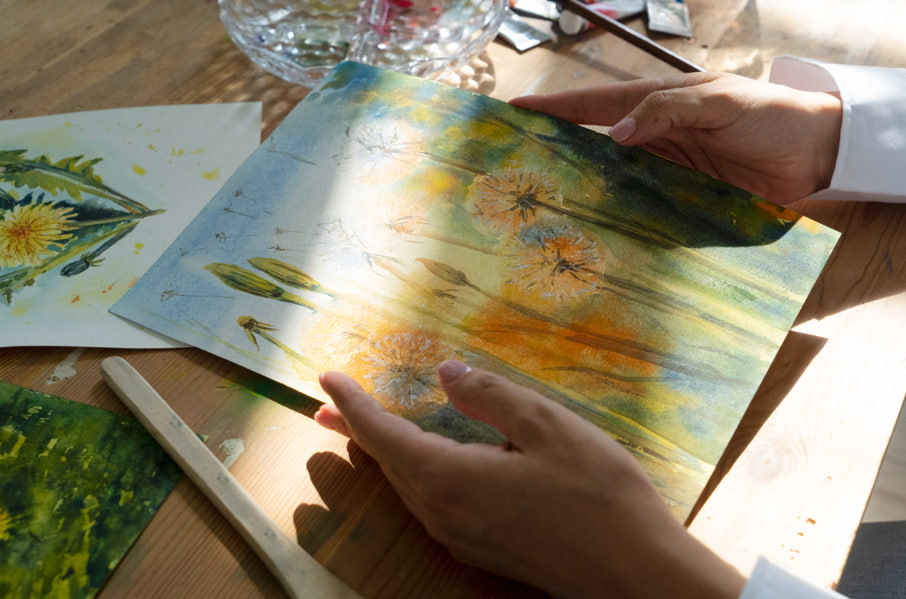Introduction:
Watercolor painting is all about mastering the flow and unpredictability of the medium. While it may seem like a challenging technique, once you understand a few essential techniques, you’ll be able to create beautiful, expressive works of art. In this article, we’ll dive into some of the most important watercolor techniques every artist should master, from basic to advanced methods, to help you take your painting skills to the next level.
1. Wet-on-Wet Technique:
The wet-on-wet technique is perfect for creating soft, smooth transitions and blended colors. To begin, wet your paper with clean water using a brush or spray bottle. While the paper is still damp, apply watercolor paint. The paint will spread and blend naturally with the water, resulting in a soft, dreamy effect. This technique is often used for backgrounds, skies, and abstract paintings.
Tip: Practice varying the amount of water you use. Too much water can make the colors wash out, while too little will result in harsh lines.
2. Wet-on-Dry Technique:
The wet-on-dry technique involves applying wet paint directly onto dry paper. This technique allows you to maintain more control over your brushstrokes and results in sharper, more defined lines. It’s ideal for adding details, outlines, and depth to your work. For instance, you might use this technique for painting the intricate details of flowers, buildings, or landscapes.
Tip: This technique is perfect for layering colors. Allow the first layer to dry completely before applying additional layers to avoid muddied colors.
3. Dry Brush Technique:
The dry brush technique is used to create texture and fine details in your painting. Using a brush with very little water and more pigment, you can create rough, textured strokes on dry paper. This method is great for painting details like tree bark, hair, or textures in stone walls. It creates a more distinct, almost scratchy effect that can add a lot of character to your work.
Tip: Choose rough or cold-pressed watercolor paper for the best results, as it allows the texture to show through.
4. Glazing (Layering Colors):
Glazing is the process of applying a transparent layer of paint over a dry layer to adjust the color or add depth. By using transparent watercolor paints, you can build up color gradually, resulting in a rich, luminous effect. Glazing is especially useful when you want to add depth to shadows or highlights in your painting.
Tip: Be patient and allow each layer to dry completely before applying the next. This will prevent the colors from blending together and will give you more control over the final result.
5. Salt Technique:
The salt technique is a fun and unexpected way to add texture and interest to your watercolor paintings. After applying wet paint to your paper, sprinkle some salt on top. The salt will absorb the water and create interesting, organic textures as it dries. This technique works best with vibrant colors and is often used for backgrounds, abstract art, or creating texture in natural elements like rocks and sand.
Tip: Experiment with different types of salt (table salt, sea salt, etc.) to see how they affect the texture. Larger crystals tend to create larger, more dramatic textures.
Conclusion:
Mastering these watercolor techniques will give you the flexibility and creative freedom to tackle any painting project. Each technique serves a unique purpose, from creating soft gradients to adding intricate details and textures. Practice each method individually and experiment by combining them to create unique, stunning watercolor paintings. With time, your skill and confidence with the medium will grow, allowing you to push the boundaries of your artistic expression.

